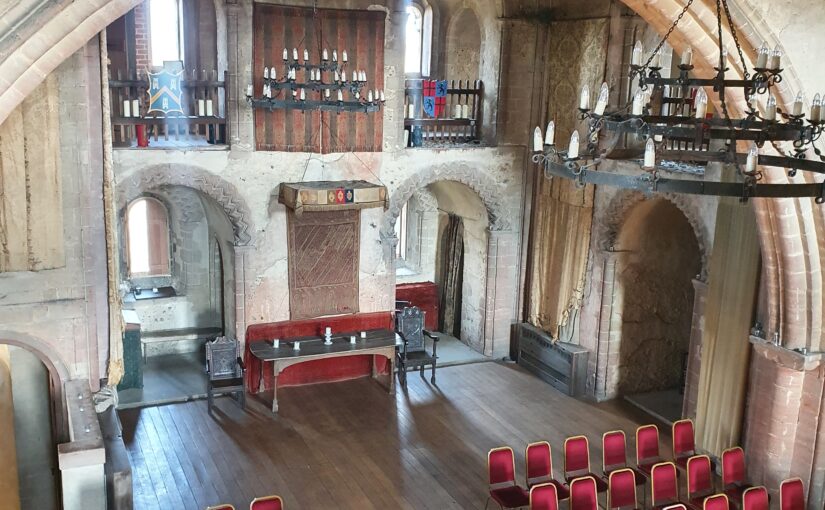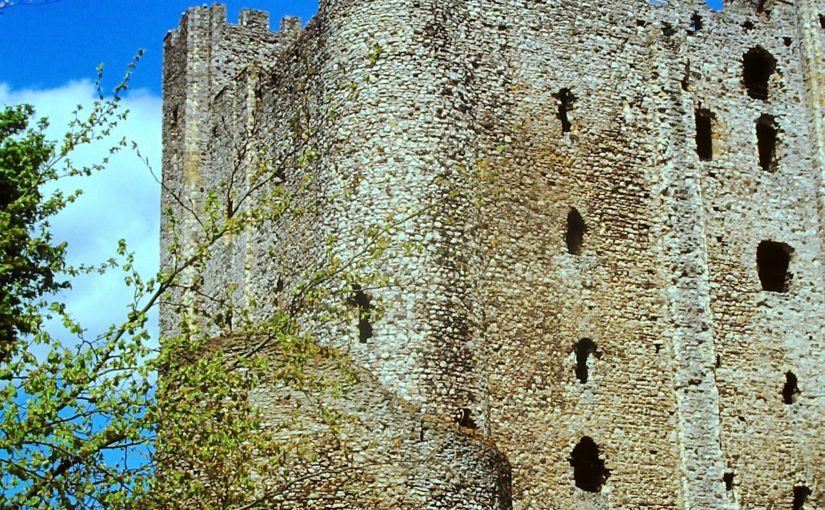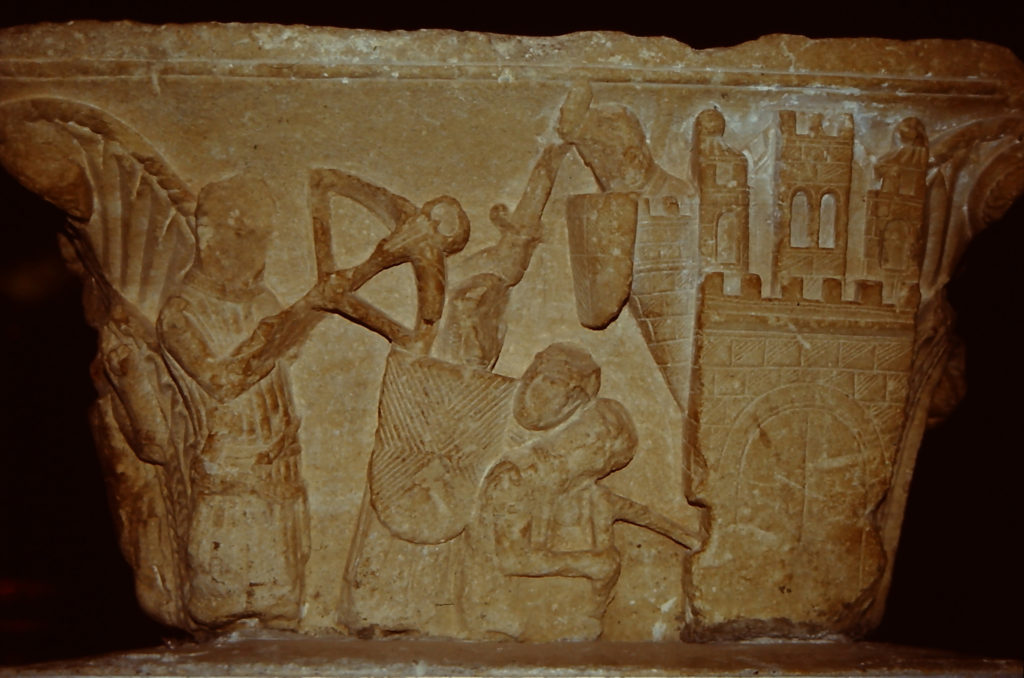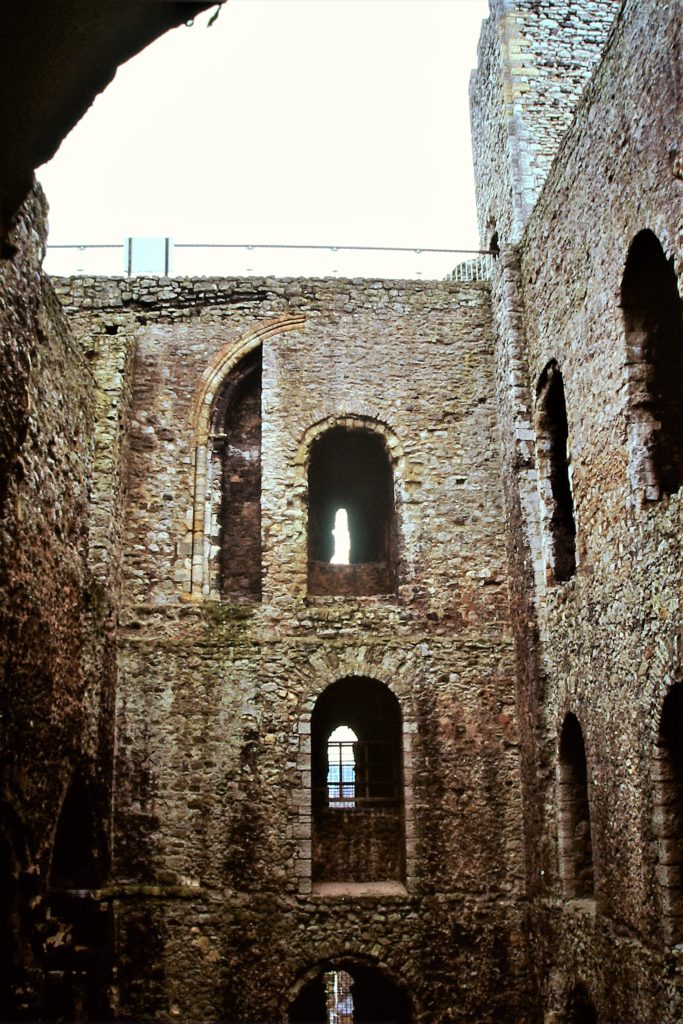Dr Katherine Weikert Senior Lecturer in Early Medieval European History at the University of Winchester takes a look at galleries in Anglo-Norman keeps.
At many Anglo-Norman tower-keeps, there is a significant part of the castle which remains generally under-discussed: the gallery. Often circling above a main room or hall space at least one storey above the floor level, a gallery is normally interpreted to the public as a space for musicians, or a passageway, if noticed at all.
Subscribe to our quarterly newsletter
Part of the neglect of the gallery often has much to do with the survival of the building remains. There is considerably reduced size and physicality to these galleries compared to great rooms such as halls and chambers. One of the best-preserved galleries is in the White Tower, London, which has galleries above both the main rooms and the connected St John’s Chapel. Dover Castle (Kent), too, demonstrates this (though you must use your imagination to remove the later brick barrel-vaulted ceiling to envision it!) But many others such as at Rochester remain in a state that make it more difficult to understand. This means that the keep galleries are often neglected not only in scholarship, but in public interpretation.

But understanding these galleries provides new insight to the performance of prestige at royal courts and high-status halls in the Anglo-Norman period. What comes to light is the importance of seeing, and being seen. Although in most current states of preservation this is difficult to perceive, between keeps which retain their galleries in safe conditions, and studying the galleries from a point of view of pathways and viewsheds, their meanings and use become more transparent.
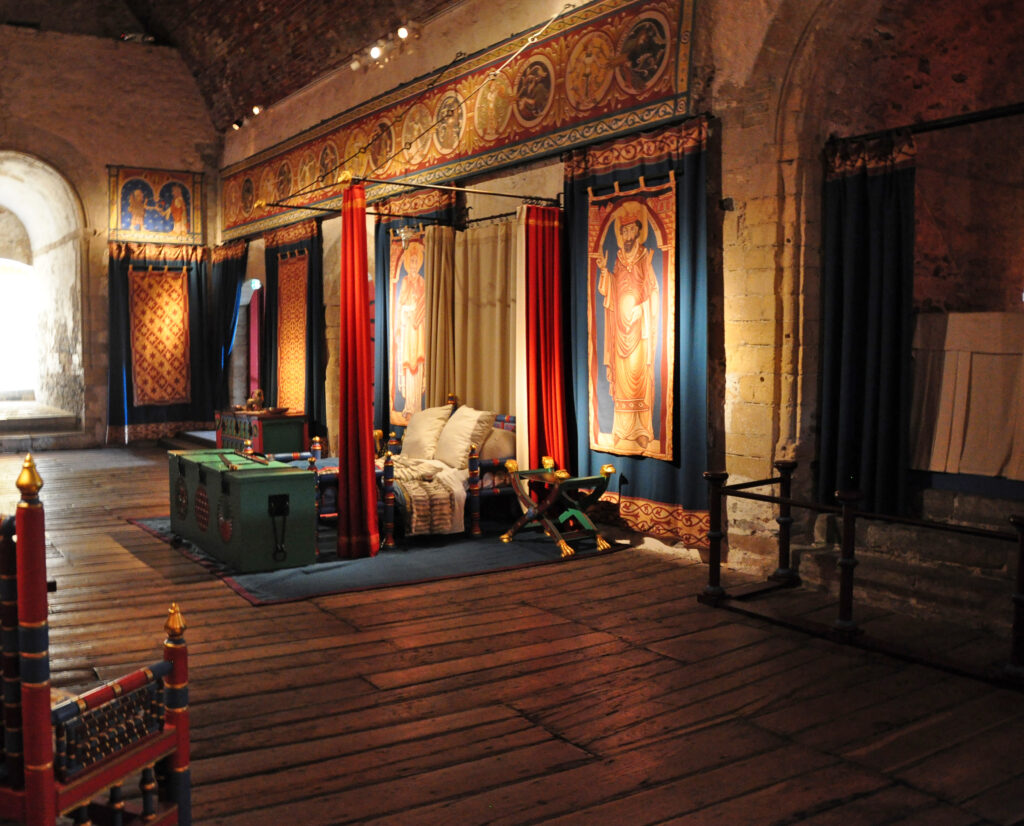
In castles such as the White Tower, Dover, and Rochester (Kent), the galleries providing viewsheds into the grand rooms below were a part of routes which indicate that the galleries were important parts of the castle’s ‘choreographed’ space. These passageways to and from these galleries were on paths that included ‘prestige’ places such as the hall and chamber. At Dover, the views from the second-floor galleries actually overlooked both the hall and chamber – leading to even more insight to research which indicates that a chamber was not so much ‘private’ as ‘more select.’ At Rochester, the gallery on the third level equally overlooks the main rooms on either side of the spine wall on the second floor. These galleries also provide a route between the two rooms, an alternative to the two doors in the spine wall between them: a more circuitous route no doubt, but one that provided different opportunities to see the whole rooms below, and be seen above them.
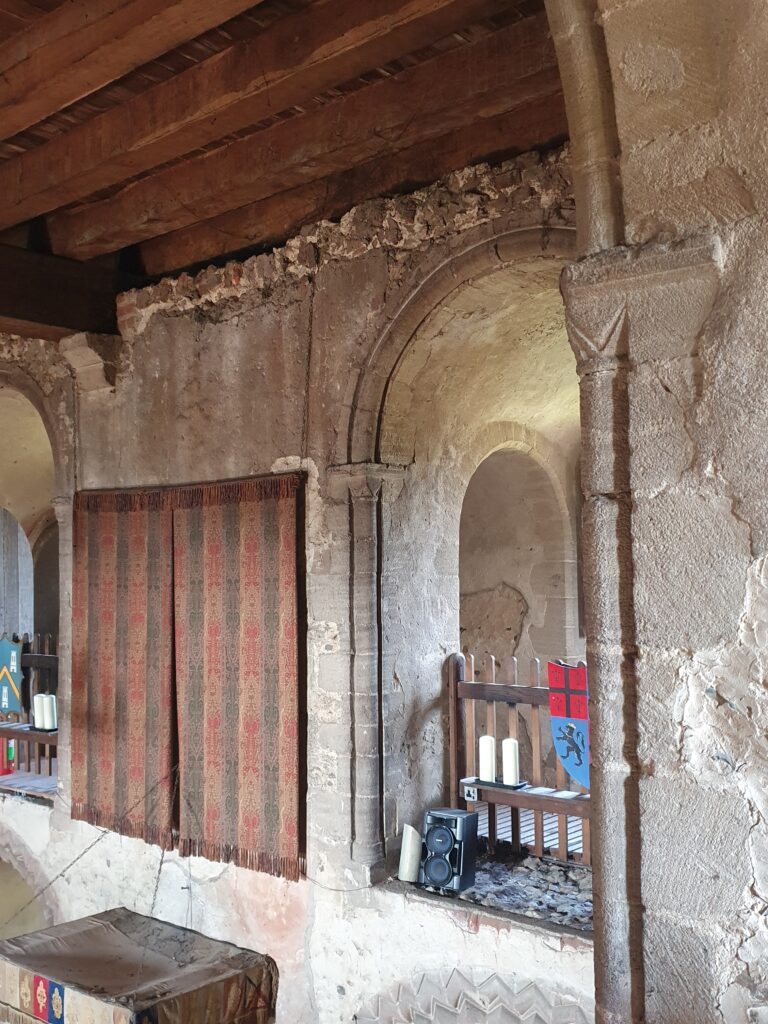
More rarely, castles retain enough fabric to actively see these viewsheds. Hedingham Castle (Essex), where some of our donors enjoyed a special event in 2021, is in superb and even liveable condition. Here, it is possible to see, experience and understand these paths and views from the gallery. At Hedingham, the gallery overlooks both sides of the grand first-floor room which is divided – but not separated – by an impressive two-storey arch. Views from the gallery overlook both sides of the hall below. Although the gallery arches are undecorated – the ground-floor arches below them have chevron patterns – the size of the gallery arches directly echoes the size of the ones below them. These are wide, open arches from which a person could be seen, while they are simultaneously seeing the action in the hall.

In all of these castles, people in those great rooms below the galleries had also to consider the impact of the visual message that they were sending to those above. This could include regular matters of state or court; ceremonies or feasting at important events; crown-wearing at notable events; the reception of other high-ranking aristocrats and foreign emissaries, and more beyond this. At places such as St John’s Chapel in the White Tower, the liturgical message also needed to be seen and received. Why make such a display at times and places such as these if it couldn’t be seen? Galleries provided an audience space for those watching the enacted scenes below. In some circumstances, depending on how the hall was set for a number of guests, it may have been possible to better see the action from the gallery than from the floor!
These gallery viewing points were also important places to be seen, not just to see. At Dover, the king and queen could sit on their dais and very likely see those in the galleries in front and above them better than they might see who was at the back of the single-levelled floor of the hall itself. Remaining stone decoration of castle gallery arches further helps to understand the visual impact of being seen in these places. For example, the arches in both the great hall and the gallery at Hedingham echo each other with scalloped capital. At Dover, the gallery behind the high end of the hall is large enough for an entire visual tableau to be created, framed and presented to those in the hall below, an opportunity to view and perhaps control the vision of who was being seen in the gallery behind the seated king and queen.
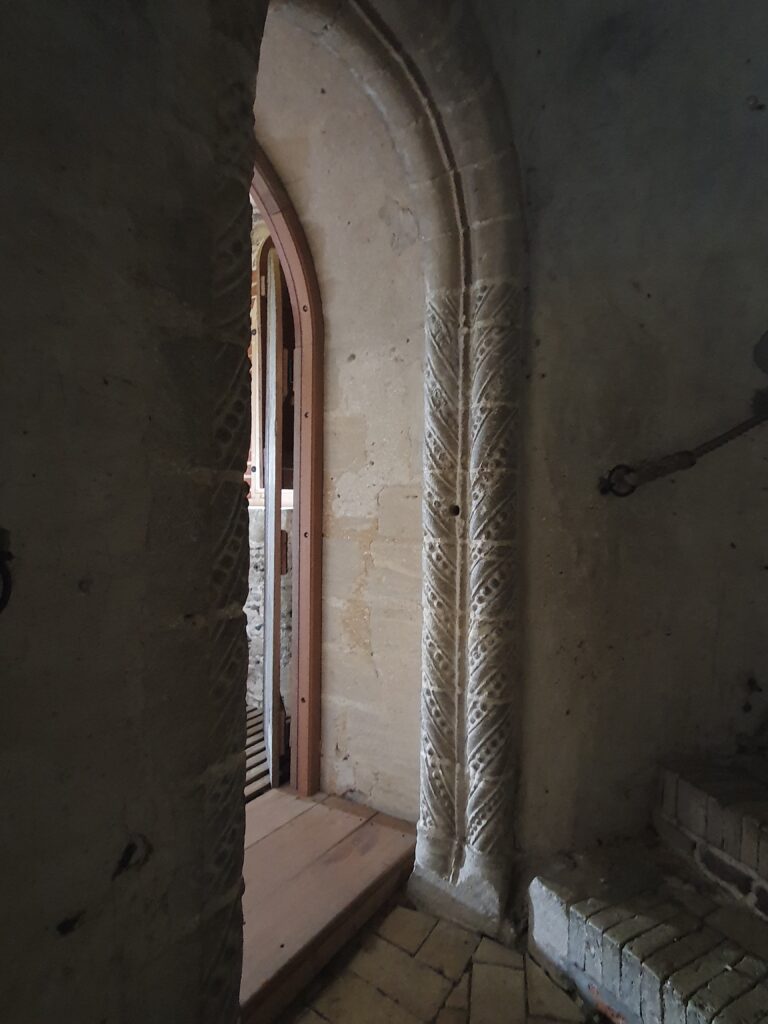
Further surviving stonework can lend even more to the interpretations of galleries as prestige spaces. At Hedingham, the south entrance to the gallery level has a particularly fancy doorframe with double-shafted columns with a spiral pattern and beading carving. This gallery was no service level or low-status route, but one that announced its importance in stone. As in the interpretations at Conisbrough Castle (South Yorkshire) and its fancy doors leading to high-status spaces, we should envision galleries such as these as controlled spaces, possibly with doormen allowing or denying entry into them, with access routes including a series of checkpoints in order to reach them.
What use a castle gallery then? More attention needs to be paid to these parts of castles. Although no doubt a fluid space that changed use as needed – as were most castle rooms – the galleries of Anglo-Norman keeps need to be realised as places for high-status members of the court and the castle community not only to see proceedings below, but be seen. The need to be noticed in attendance to a lord cannot be underestimated in the middle ages, where status was important, and malleable. There is more to a castle gallery than meets the eye…and the visual element of them is a key part to understanding them.
Subscribe to our quarterly newsletter
Further reading:
Robert Liddiard, Castles in Context (Macclesfield: Windgather Press, 2005).
Katherine Weikert, ‘Creating a Choreographed Space: Anglo-Norman Keeps in the Twelfth Century,’ in Buildings in Society: International Studies in the Historic Era, edited by Liz Thomas and Jill Campbell (Oxford: Archaeopress, 2018), 127-40.
